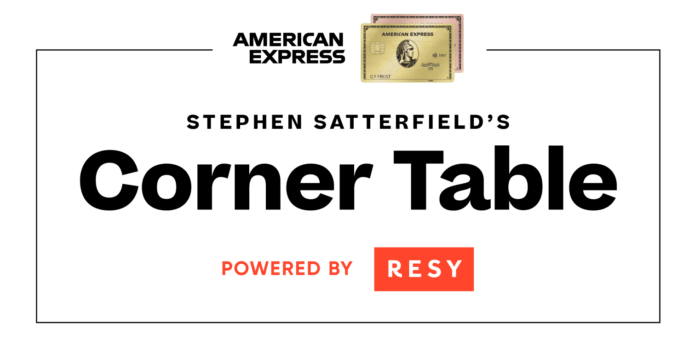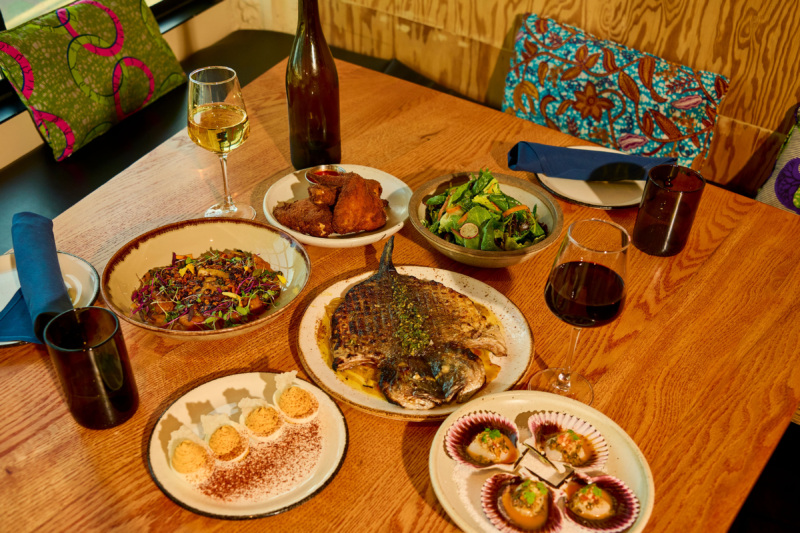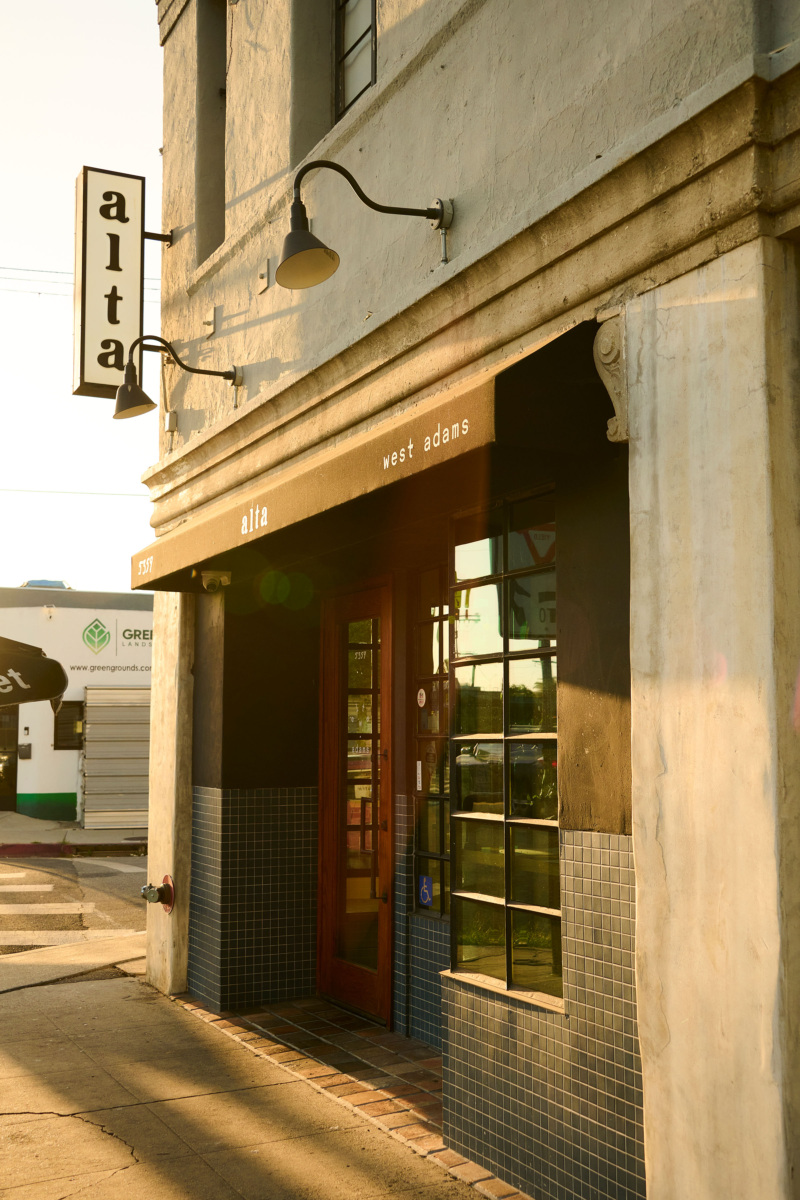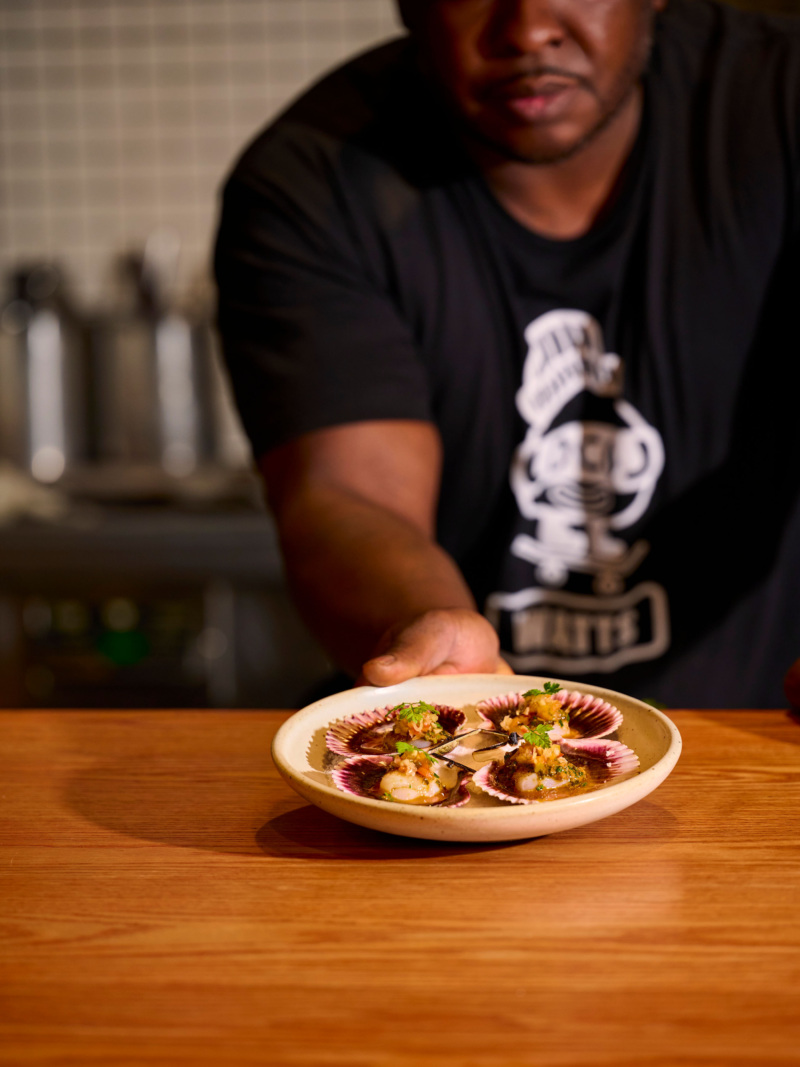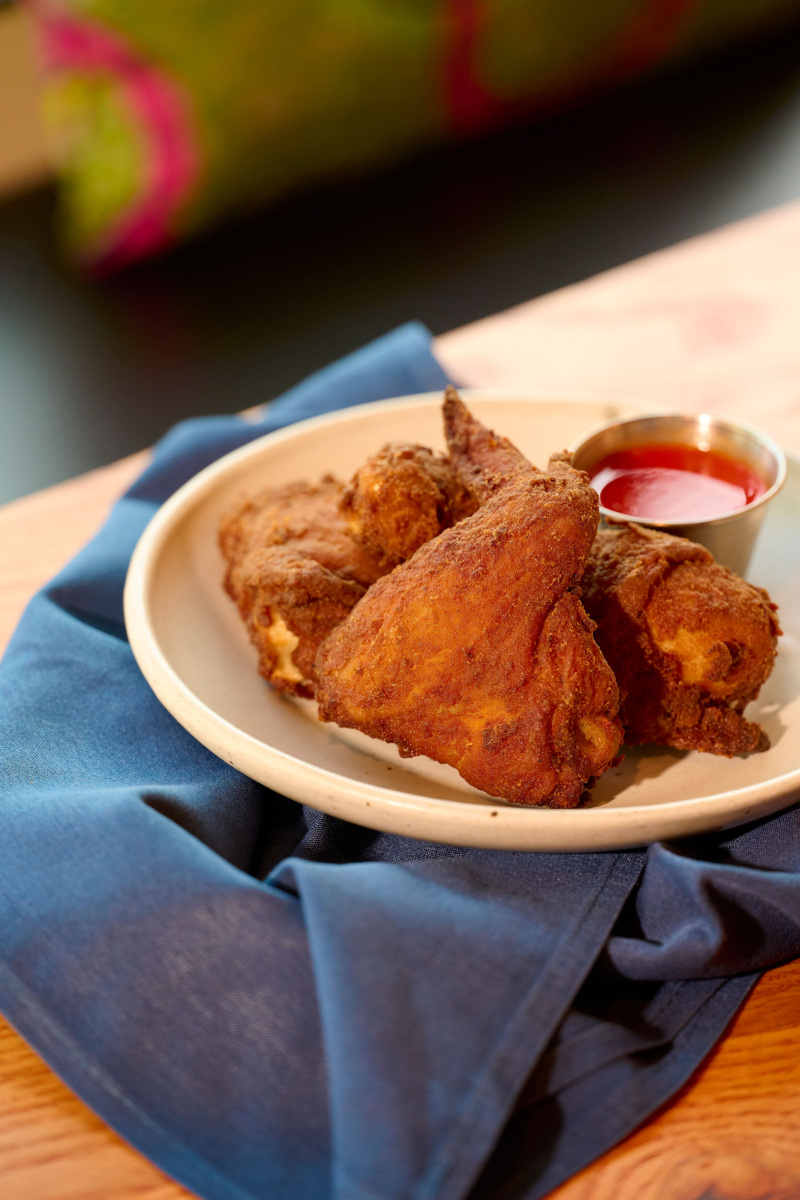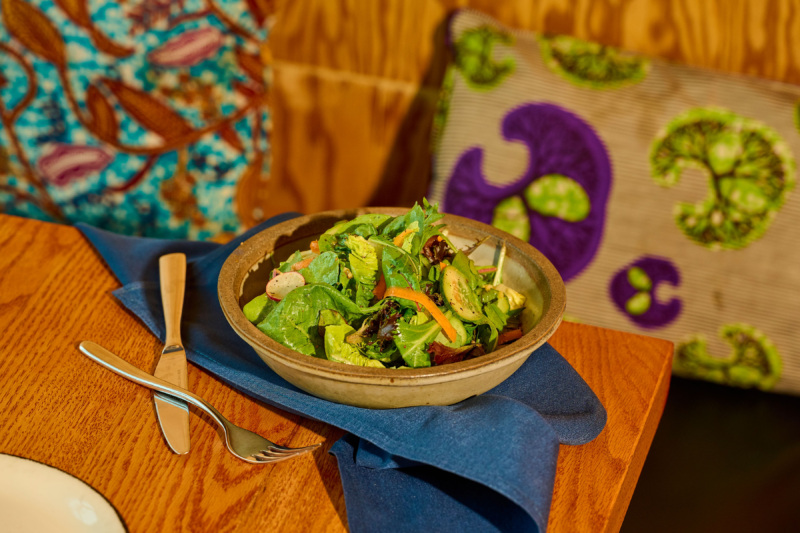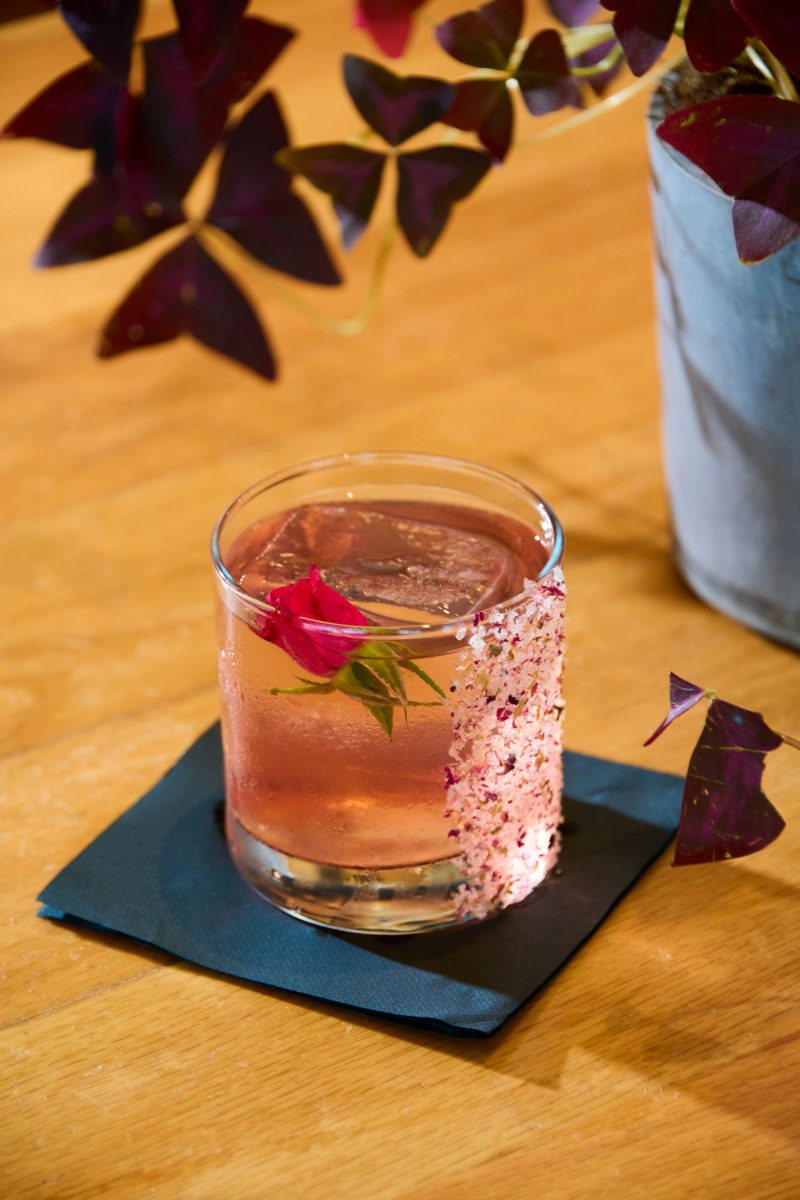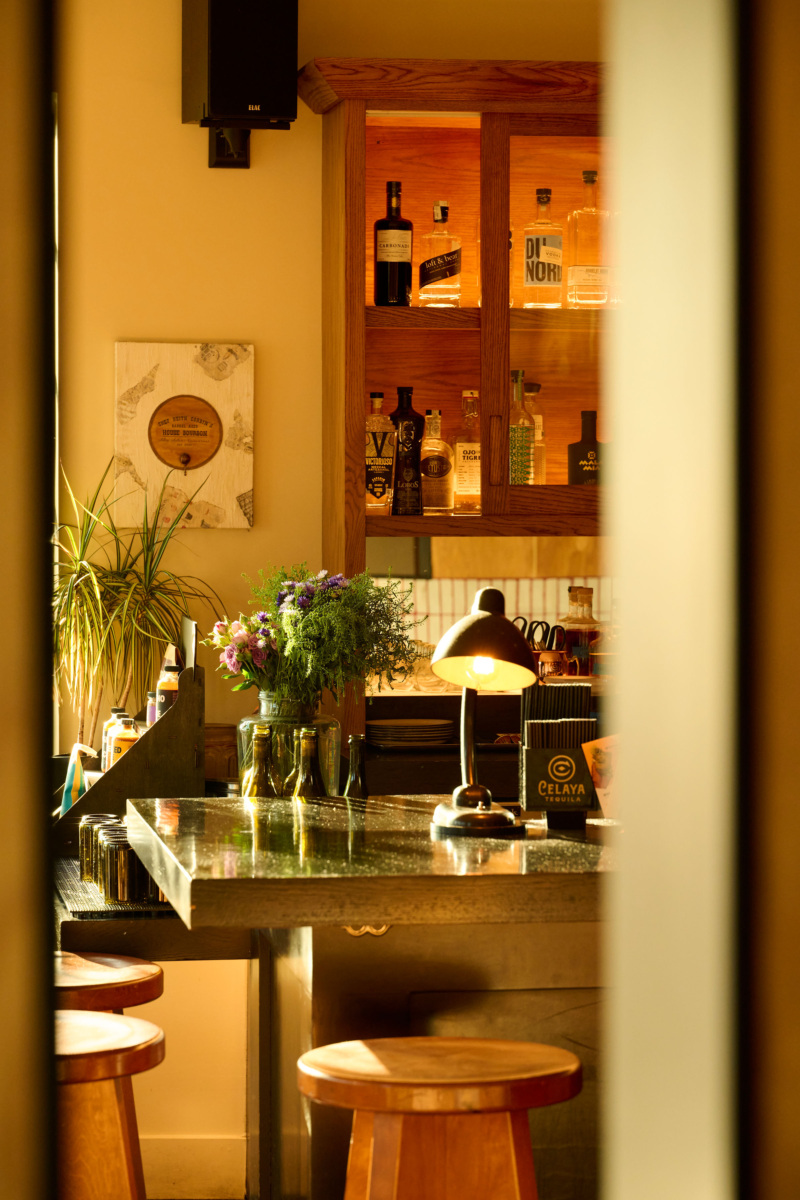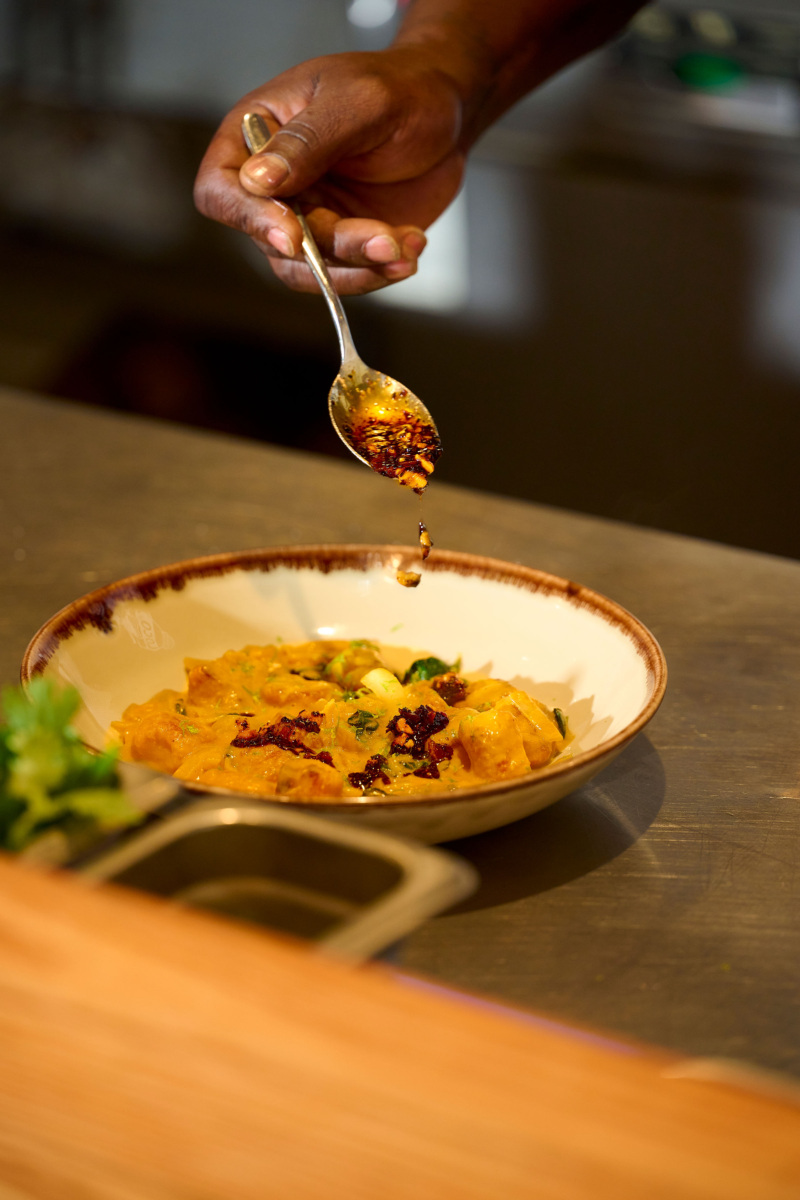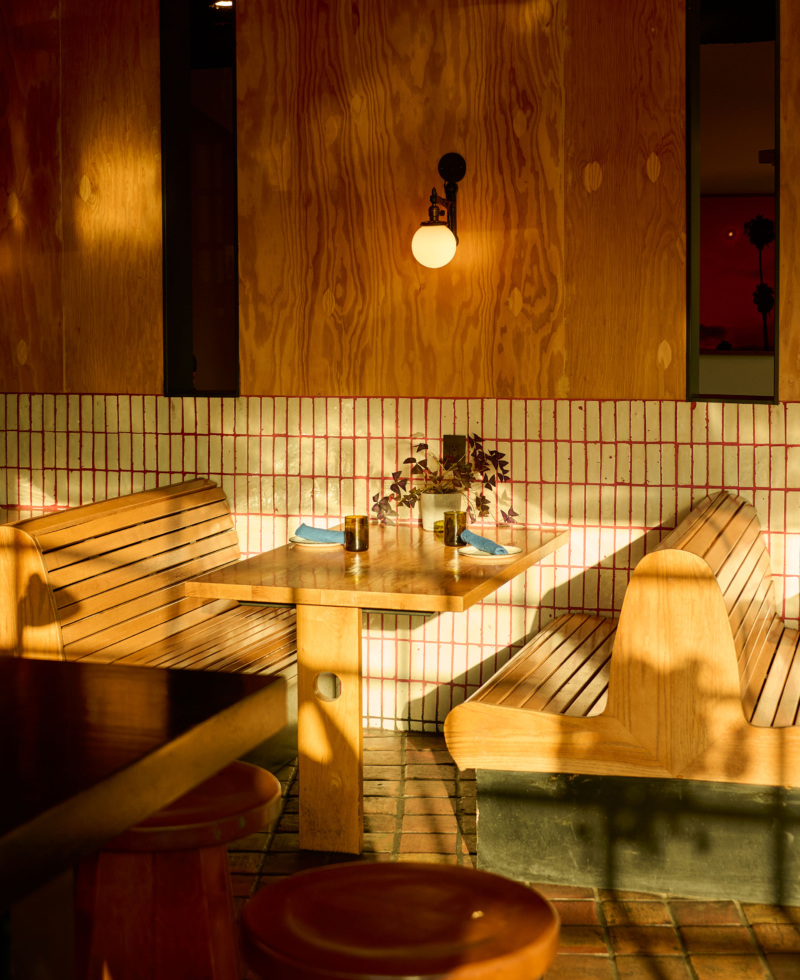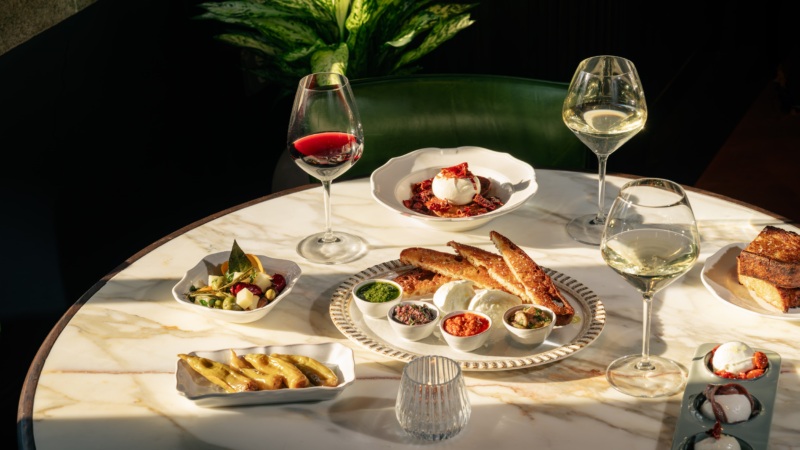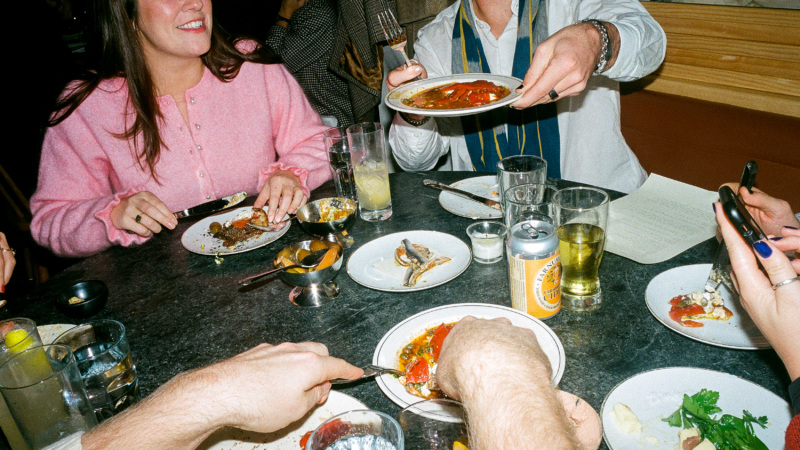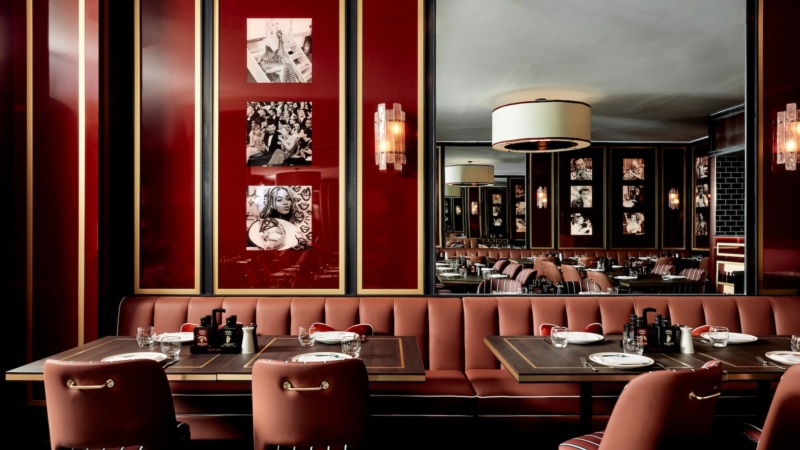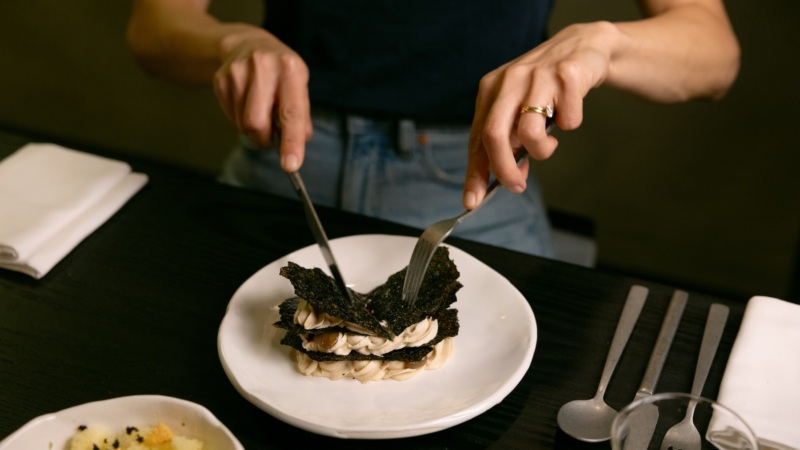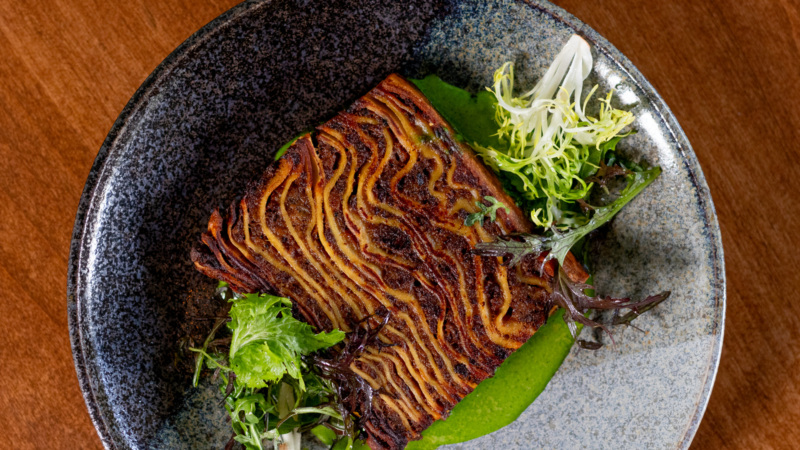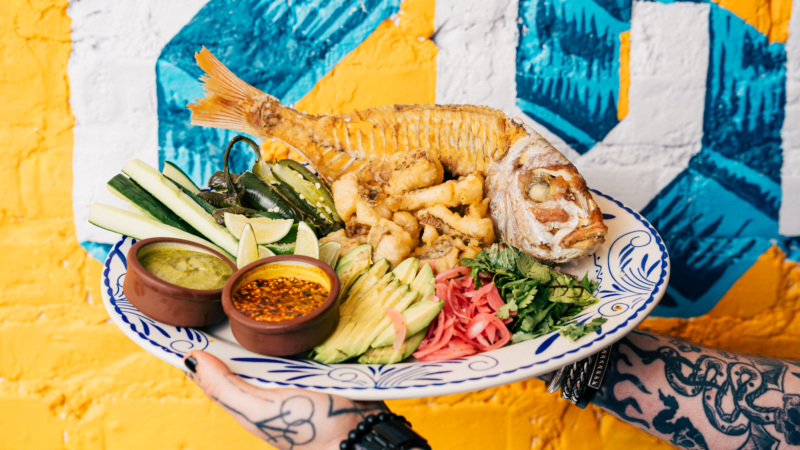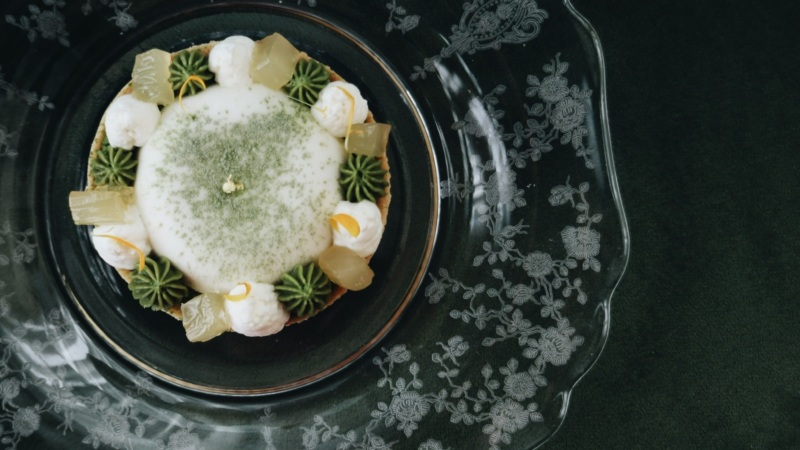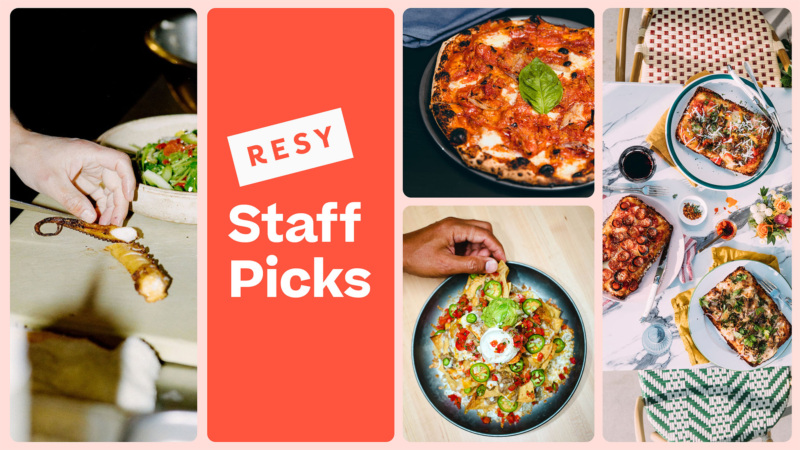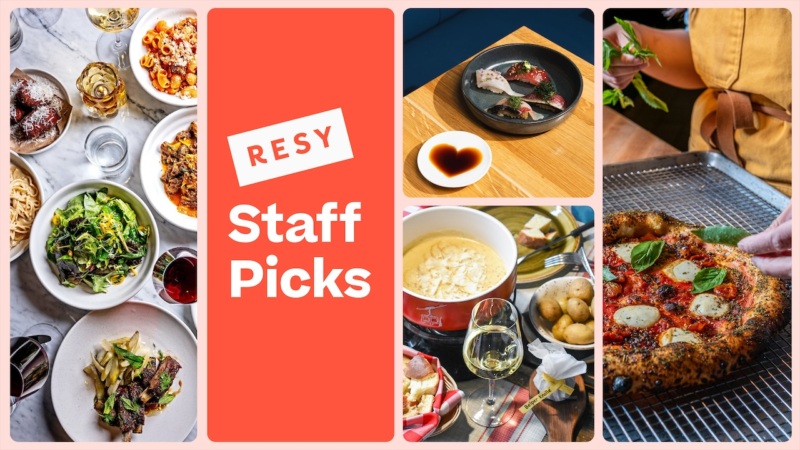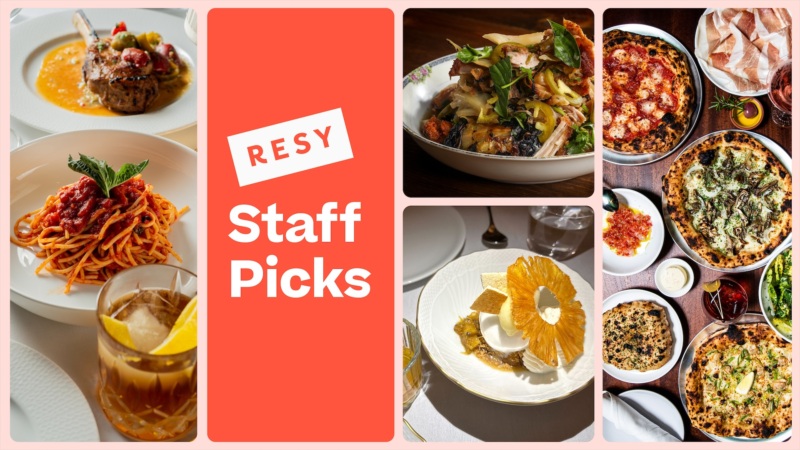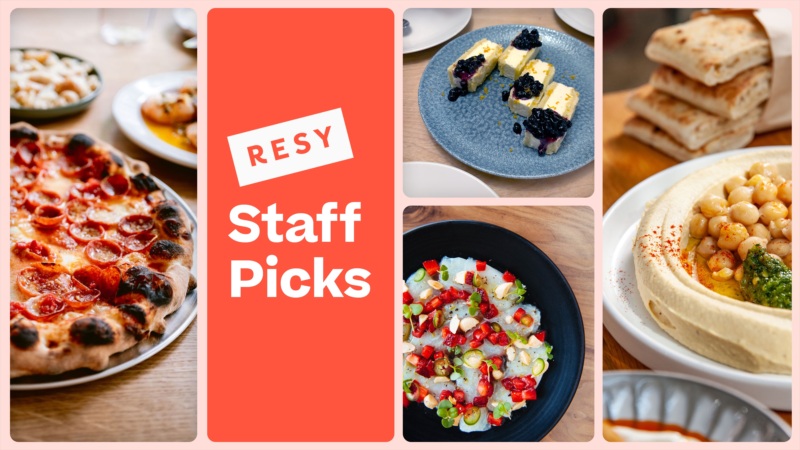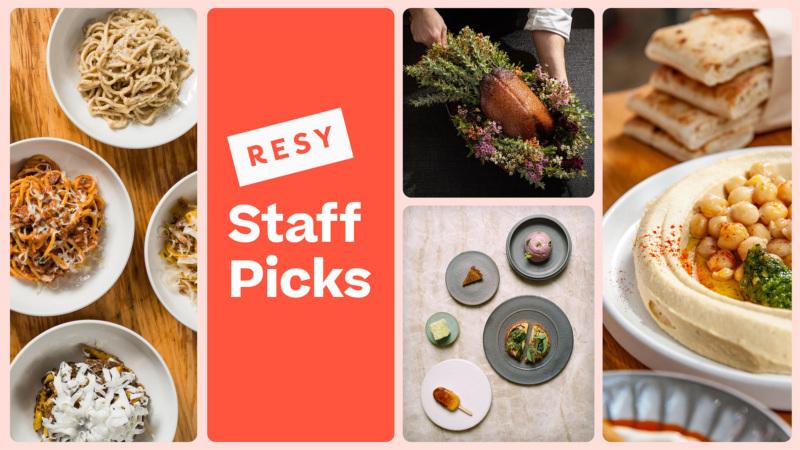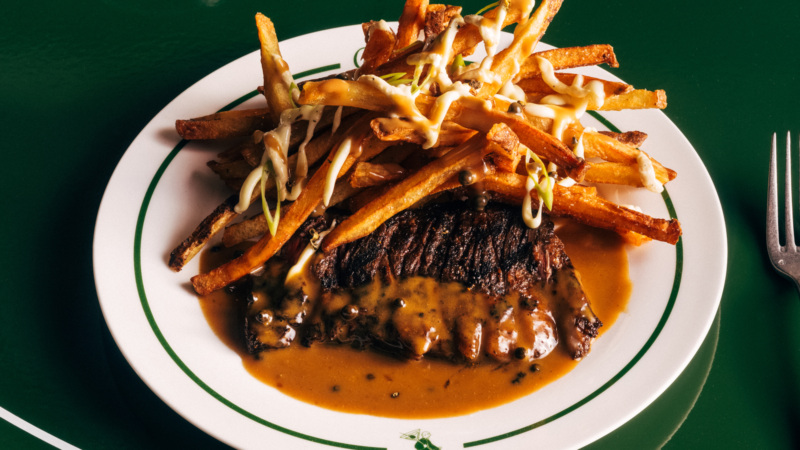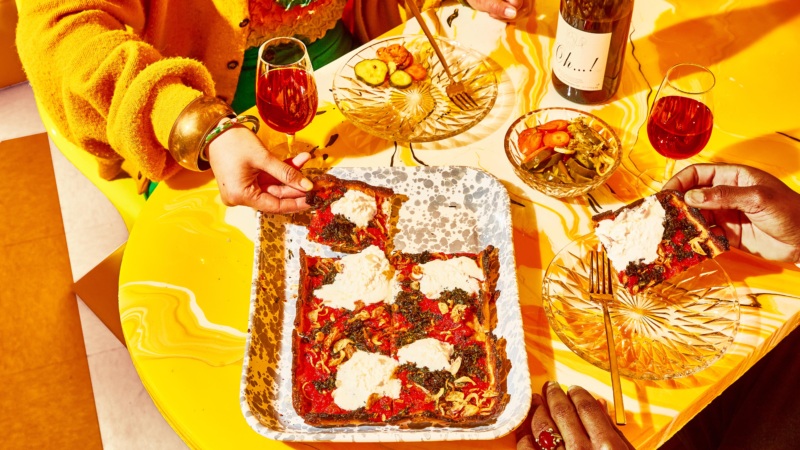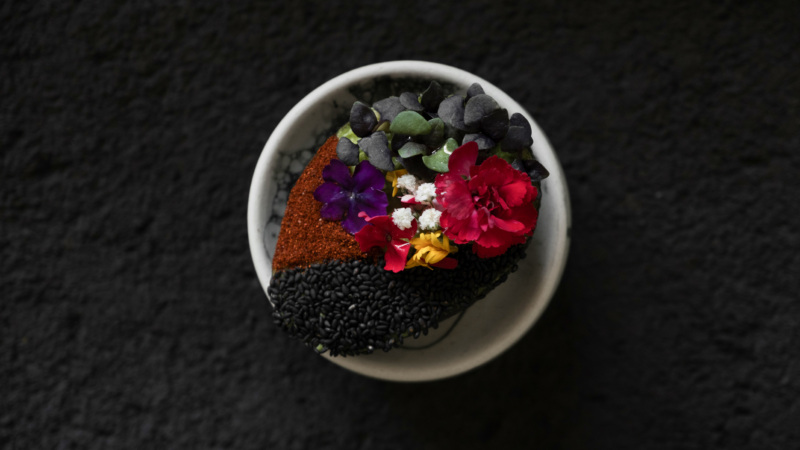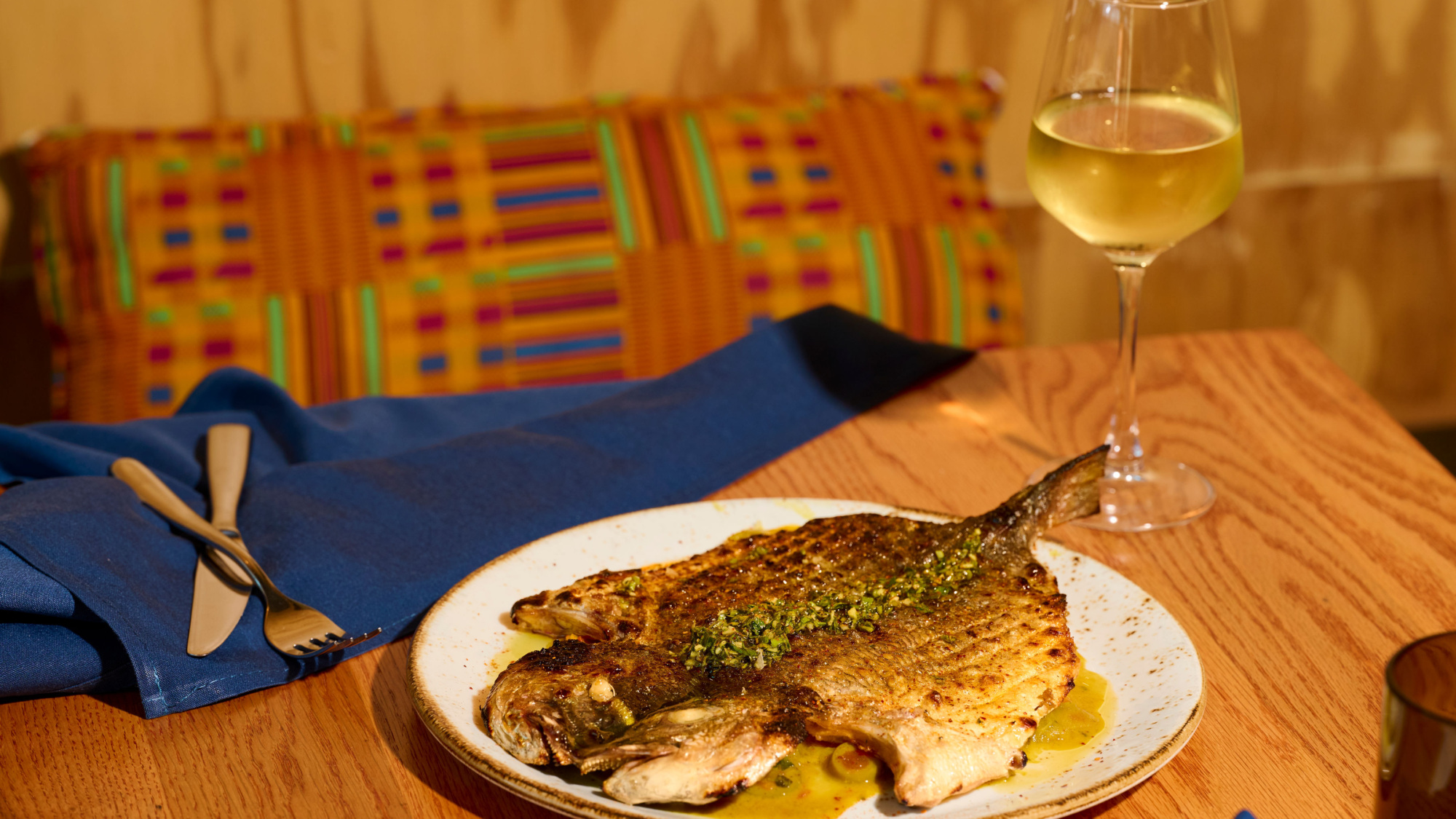
Stephen Satterfield's Corner Table
Alta Adams Is Here to Redefine the Essence of California Cuisine
The American Express® Gold Card and Resy have teamed up with Stephen Satterfield, award-winning host of “High on the Hog,” to bring you Corner Table: a series of exclusive interviews with top chefs and restaurateurs from across the U.S. Discover the personal stories and inspirations of these culinary masters and see how their food is reinventing American dining culture.
Stephen Satterfield is an award-winning journalist, author, founder of Whetstone Media and Hone Talent Agency, and host of “High on the Hog” on Netflix. His book “Black Terroir” is due out in fall 2024.
Alta Adams takes the soulful essence of West African cuisine and the farmers market freshness that is a hallmark of modern California cuisine, and presents it in a warm, richly toned environment with plenty of fresh light and hanging vines. No wonder its devoted following includes Los Angeles locals who not infrequently find themselves seated next to fellow guests that might include Barack Obama, Jay-Z, Adele, Solange, or Issa Rae.
The restaurant is a collaboration between chefs Keith Corbin and Daniel Patterson — reflects both a dose of star power and an evolving sense of California cuisine. Patterson’s San Francisco restaurant Coi was one of only a handful in the United States to receive three Michelin stars, and for more than 15 years was definitional in modern West Coast dining. The two connected when Corbin was hired to work on the original LocoL in Watts (Patterson’s collaboration with chef Roy Choi to serve fast-casual food) and evolved to include other roles with Patterson’s highly regarded Alta Group restaurants in the Bay Area.
This led to Alta Adams, and a collaboration defined by unique dining experiences. Just as crucially, mutual respect and affection permeate the conversation between Corbin and Patterson, and those qualities show up on the plate.
The Alta Adams menu reads like a hymn to soul food: red beans and rice, fried fish, oxtails and rice, mac and cheese, fried chicken. But a gusto for California produce takes center stage amid that comfort — the chefs know their farmers by name, and have nurtured coveted relationships, where farmers set aside some of the best and most beautiful garden items for the Alta Adams table.
We sat down with Corbin and Patterson for a wide-ranging conversation about Alta Adams, the chickens and gardens of Watts, the road of rehabilitation, the magic of smoked oil in collard greens, and the umami of buttermilk-brined fried chicken.
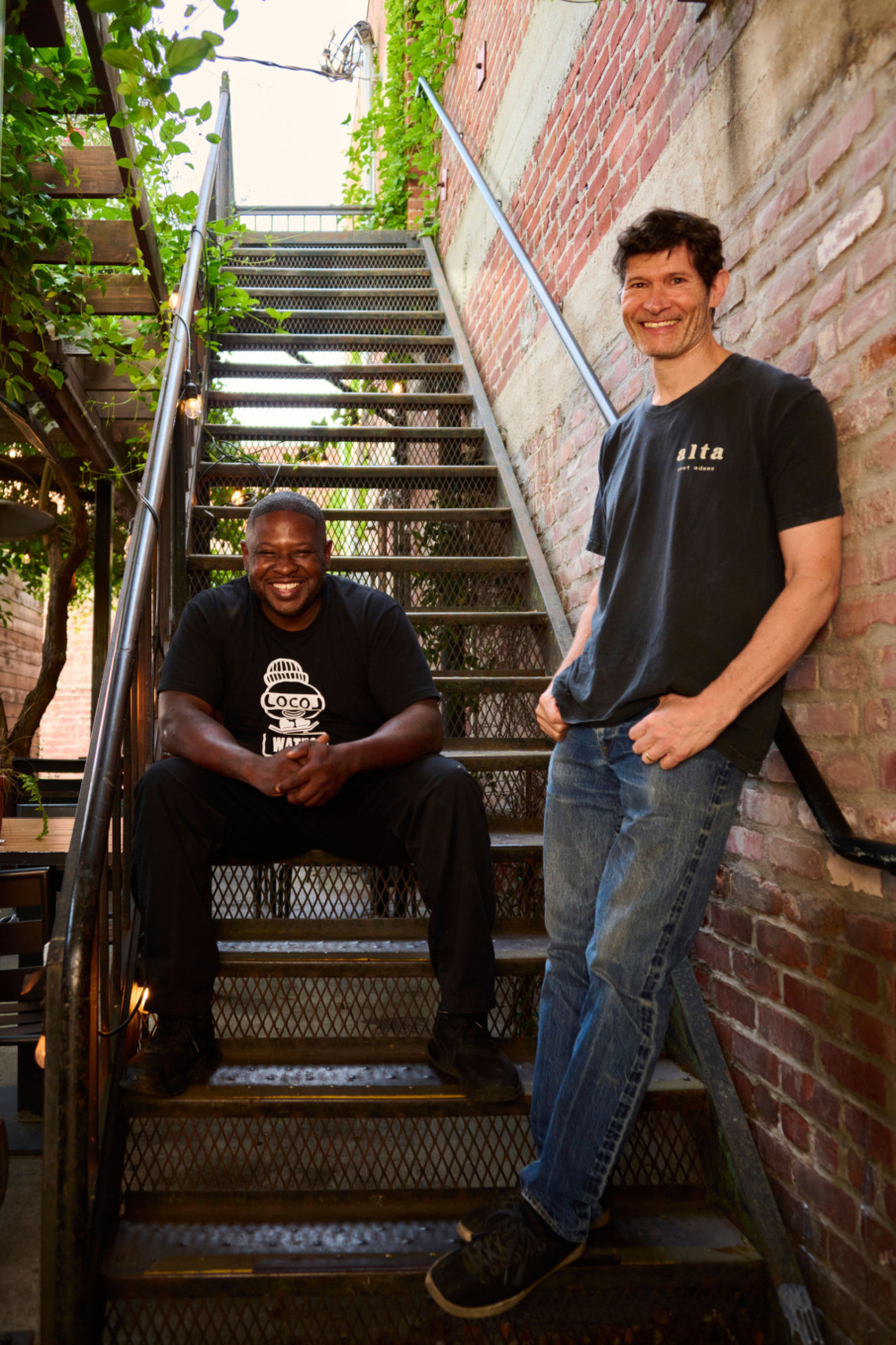
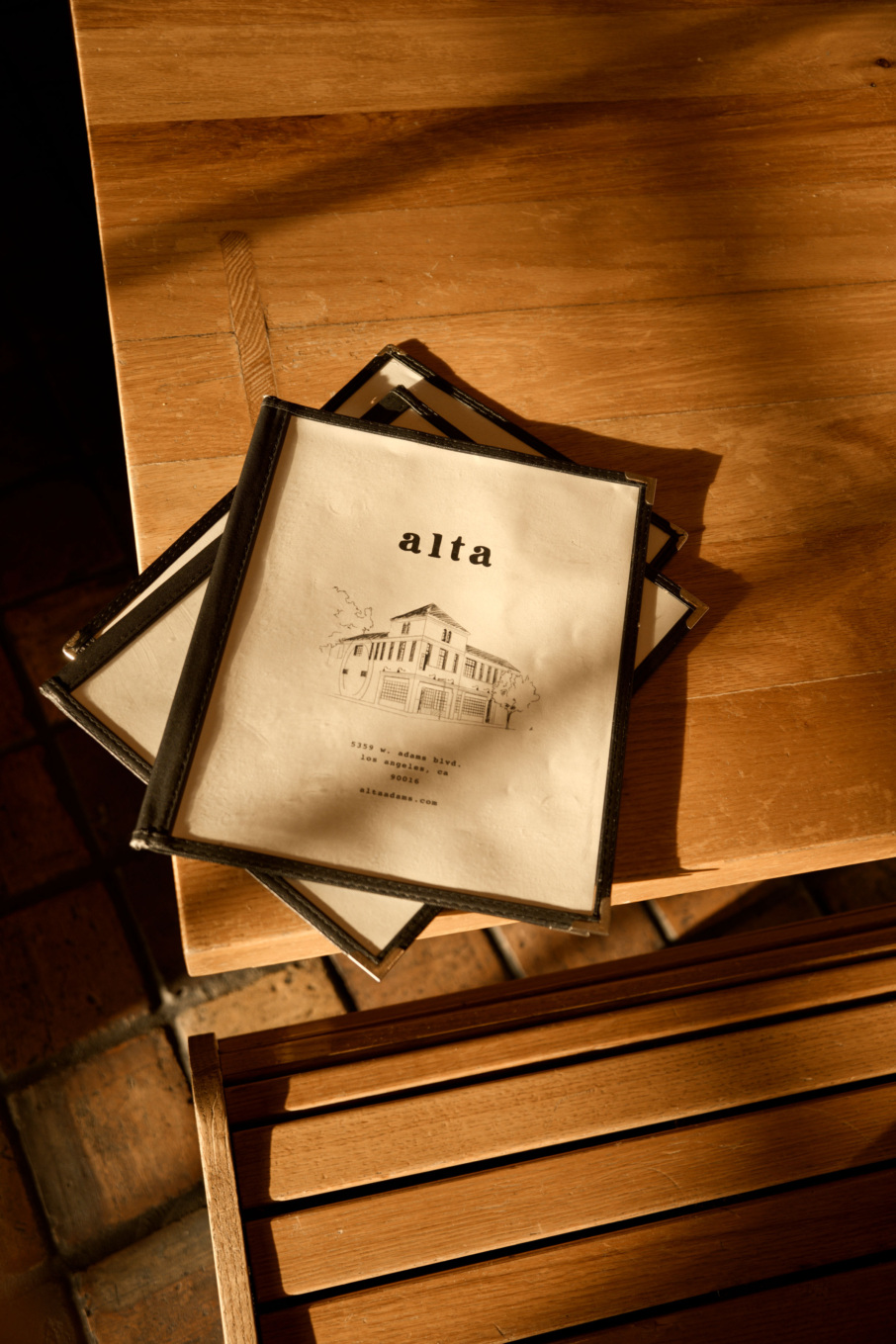
Let’s start with the menu. Traditional West African food and California cuisine. Soul food. Southern flavors. Produce-forward thinking. Dishes you grew up creating alongside your grandmother, chef Keith. How does this all fit together?
Keith Corbin: When Daniel and I first started thinking about Alta Adams, even before that, we talked about the food I grew up eating. I started to think about what my grandmother could have created with these ingredients. We talked about tracing it back, following the diaspora, and it started to open up from there.
When you think about my enslaved ancestors, they were brought here and they created food from familiarity using techniques that they had back at home, but also with new ingredients. So when you take, for instance, the yam to the sweet potato, they treated it the same.
We thought about deframing it, and reframing it, and doing California soul food using the ingredients that we have surrounding us, the beautiful bounty that California has to offer. We stayed true to the concept, the ideas and the flavors of traditional soul food, but incorporated West African spices and flavors, California ingredients, and a high level of technique that Daniel brings to the table as well.
Daniel Patterson: I also think about the connection to farms; the land kind of got lost post-World War II. You go to a community like Watts and you look at it now, it’s all asphalt, but if you look a little closer, you’ll see chickens running around. People still have their gardens in the back.
Watts used to be a place where people ride horses, and it was very agricultural. This kind of cooking was always rooted in the land around it. That got severed through circumstances outside of anyone’s control, through developers, through the city.
You arrive at the present day thinking soul food is something separate from a farm. You don’t think of it like you would a fine dining restaurant, where they’ve got the names of the farms on the menu, and they always talk about these radishes that they got.
But Keith saw how those restaurants operated, and asked this basic question: “What would happen if the food I grew up with was made with those great ingredients and access to local farms?” A lot of the heartbeat of the food is keeping close to the land and the connection to growers and ranchers.
Corbin: When you think about soul food, it was agricultural in the South as well, where this food was supposed to be created. They were raising and killing and cooking the food that was around them, raising chickens, farming collard greens, growing beans.
Great restaurants anywhere, but maybe especially in California, need to cultivate good relationships with their farmers. What does that look like for Alta Adams?
Corbin: A lot of my learning has been with Daniel and the team. The first time I’ve ever been to a farmer’s market, I think I was 36 years old, we went to [the Ferry Plaza Farmers Market on San Francisco’s] Embarcadero. And I witnessed the importance of relationships.
Sometimes the farmers will have a small amount of something great, and if you have that relationship, they have it set aside and they call you over and they show you that great thing that no one else has access to.
I’ve seen, over the years, Alta cultivating a relationship with farmers and actually having conversations about them growing things specifically for us. I’ve learned about spending money with people that share the same values. I remember early on we were talking about going to visit farms and seeing how they treat their workers, and making sure that their values align with ours.
It’s the same thing with the fishermen. Being able to tell that story about the captain of the boat and where the fish come from. All those things are important. And it’s also important to be able to show the difference between something freshly grown and something that’s been sitting on the shelf for two to three weeks.
Patterson: It’s a great two-way relationship where you’re listening to them and they’re listening to you. But in addition to that, Keith going to the market and bringing back whatever he sees that he gets excited about, that is something he can share with the team, get them excited, show them some new things, run some specials.
We always like to have some little things that we’re kind of working on that aren’t on the menu and we’ll just sell them out. But the process of making those things, it’s not particularly profitable, but the benefit is in the learning and in injecting a sense of a curiosity and an energetic excitement into the day-to-day restaurant, which can, if you’re not careful, get a little bit rote.
For me, everyone that walks in the door is VIP and special. … And I think that “everyday” guest, that community, that neighborhood person that comes in on a regular basis, is more VIP than a Jay-Z or Beyonce coming in one time. Our everyday customers are our celebrities.— Keith Corbin
Tell us what it’s been like to find yourself serving a clientele that includes very, very well-known public figures. What does that mean for you?
Corbin: Truly for me, everyone that walks in the door is VIP and special, and is going to be treated with the same level of care. Really, every guest is important. And I think that “everyday” guest, that community, that neighborhood person that comes in on a regular basis, is more VIP than a Jay-Z or Beyonce coming in one time. Our everyday customers are our celebrities.
Patterson: You get some of these people who are very, very recognizable, high-level whatever, they’re very wealthy, travel all over the world. They come back. That means something. It means that out of every choice they had, they came and they connected. But I’ll also say that the people who come here, come with very few exceptions, they choose to just sit at a table. They’re not asking for anything special. They just come and they sit here. They love the vibe. They have a good time.
Corbin: Yeah, absolutely. That’s a good thing about this space. They don’t come in and ask for a private room.
You had Gabrielle Union and Dwayne Wade sat right here amongst the guests. And I think is what’s cool for me is that they come in and they just feel comfortable enough to be amongst our guests. And our guests then got so used to celebrities coming in that they don’t get that excited and run over to the table and disrupt their meal. It’s great for our customers to be amongst these people that they get to share. Because for most places where you have that high-level celebrity, we can’t access those places. Those places cost too much money. It’s out of our range. So to have a community spot where the everyday person can dine with these people in the same space, I think it’s dope.
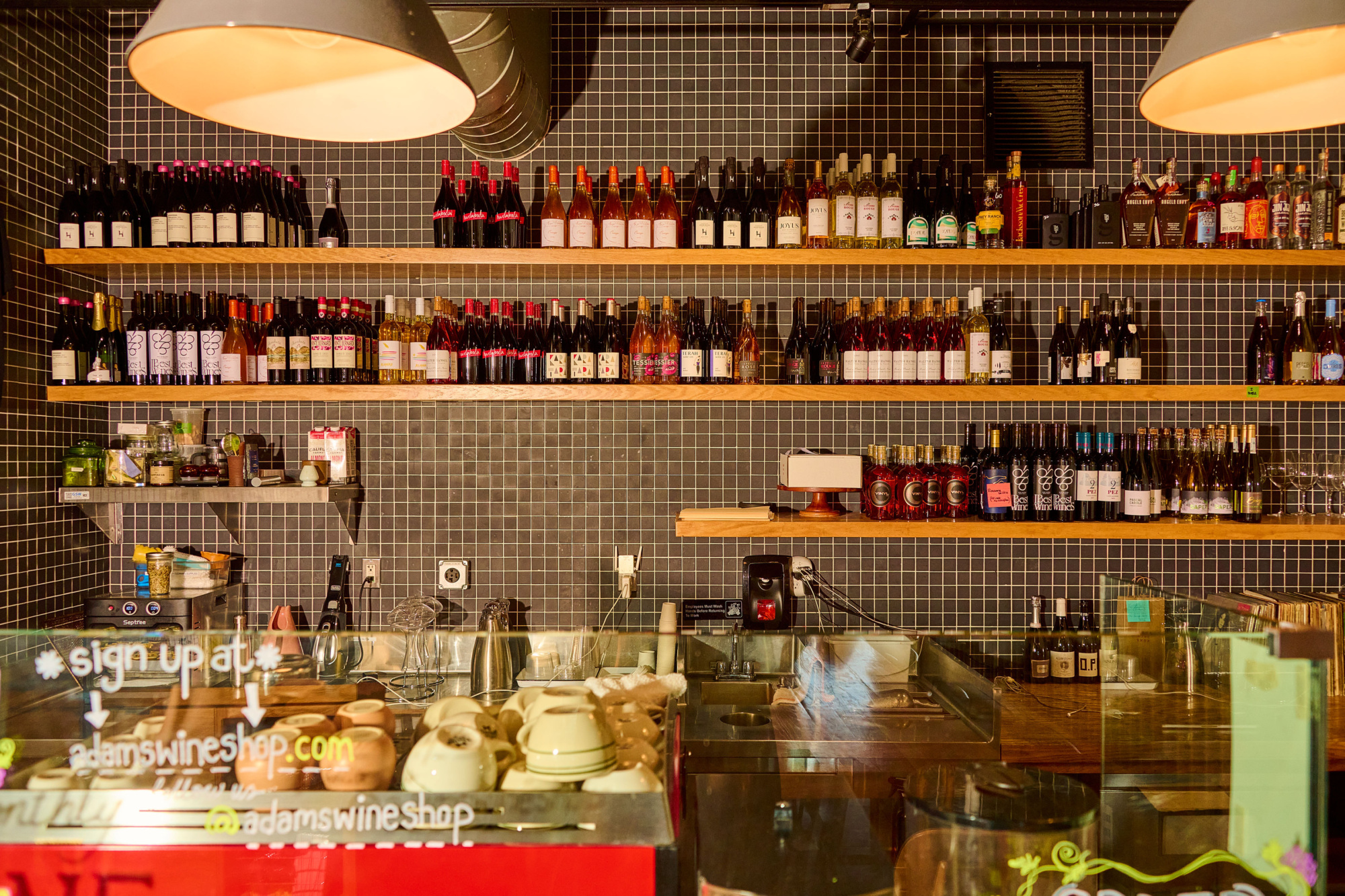
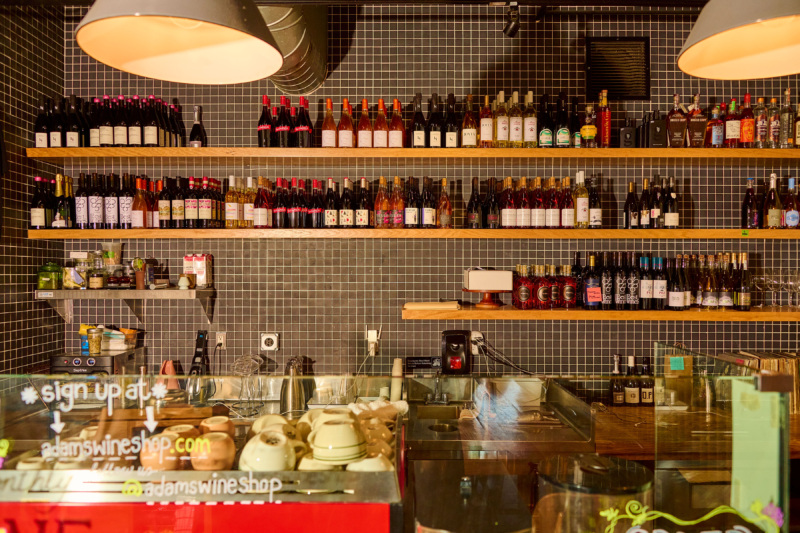
Let’s talk wine. What can you share about Adams Wine Shop? Introduce us to the vision. Any specific bottles you’re currently loving, or any wine and food menu pairings you’d like to highlight?
Patterson: One of the visions for the restaurant was to have really good cocktails and a good wine list. During the pandemic, we had a coffee shop and then it had to close down obviously because everything was shut down. And my wine director Ruben Morancy, who was a very dear friend who I had known for 20 years, said, “OK, well I’ll move to Los Angeles and come work with you at Alta.”
He was Haitian, very passionate about a program he’d been working on, how wine could be marketed and more accessible to communities of color because they’re really historically left out of how wineries promote themselves.
So [we thought], what if we do a wine shop here instead of a coffee shop? Well, if we turn into a wine shop, then what if we focus primarily on Black and women winemakers and wineries? And then we could center the ideological backbone of the store that would connect to the restaurant. That was 2020. Now the wine list for the restaurant, the wine shop, they’re kind of entwined.
People have figured this out, and a lot of wineries will search us out. What we found is that the community is very grateful. They come in — and wine shops can be intimidating, if you don’t know about wine, it’s hard to break into. People use kind of arcane, weird language. It’s historically, again, very white centered. And so sometimes it’s just hard to find your way in.
All the time people tell us that our customers are really excited not only about the wines, but about the experience of buying them and learning. So what we learn, what our customers learn and how we can incorporate that into the experience of both the restaurant and the wine shop, I would say wines that we love that we go to over and over.
Corbin: It’s important for us to not just be a liquor store. One of the big things about getting into the wine shop is that the winemaker provides time to come in and do tastings and educate the community because like Daniel said, it’s primarily white.
Even for me, wine can be intimidating. I don’t know much about it. And so historically, Blacks, we order cocktails. But to see that community or my community come out and get excited and get educated and then come back into the restaurant and ask for the wine list, it’s dope.
I kind of see the growth in the community. I’m seeing more diversity in who orders the wine. I’m seeing people who are just at the wine shop doing the taste and being educated and then come in and ask for a wine list. So we’re actually seeing the work live out and we feel like we’re all learning together.
Chef Keith, I understand you came into hospitality after you lost your job in an oil refinery. What has that meant for your journey in the food industry?
Corbin: I was fired. I was forced into figuring something out. It was either finding a job or going back to hustling in the street. So, stars aligned. I always just call it divine intervention. Daniel and Roy were opening a restaurant in Watts, where I’m from, at the same time that I was just on a leave of absence. I got a call from my mother to come down, that they were hiring on the spot. I got on the freeway, got off, filled out an application, did an interview leaning up against a gate next to an alley and got hired. And the rest is history. It changed my life forever. Literally changed my life forever.
Patterson: Changed a lot of people’s lives.
Corbin: Changed a lot of people’s lives. I think at that time my family was going to support anything in a positive direction and just so happened, thank God, that LocoL worked out for me.
You have been open about your struggles with substance abuse prior to your time with Alta. How has this impacted your rehabilitation journey, and what lessons or motivators from that experience apply to your work in the kitchen today?
Corbin: After LocoL closed, I was given a great opportunity by Daniel to partner here at Alta. I hadn’t cleaned up everything in my life, so with my addiction, I almost squandered that opportunity. The pandemic hit, we sat on this very patio and made a plan to take a leave of absence to get my life in order.
The world slowed down, perfect timing. Again, I always say divine intervention, energy, whatever. At the time I needed to get my life together, the restaurants closed. So it was the perfect setting, I went to rehab. It really wasn’t for me, but what I learned was how to deal with high-stress situations without a coping mechanism such as drugs and alcohol.
And I think that’s what I took from there. I had to deal with a lot of things there, especially fighting with the administration about canceling our visits due to the pandemic, but still taking inpatients, right? You’re not letting our family come see us because of the threat of the coronavirus, but the greed, you’re still bringing people in off the streets.
And so fighting that battle and not having the drugs and alcohol and that high-stress situation, I learned how to manage those types of situations. That’s what I carried from there. It wasn’t for me, no AA programs, it wasn’t any of that. It was being able to manage my life in a high-stress situation.
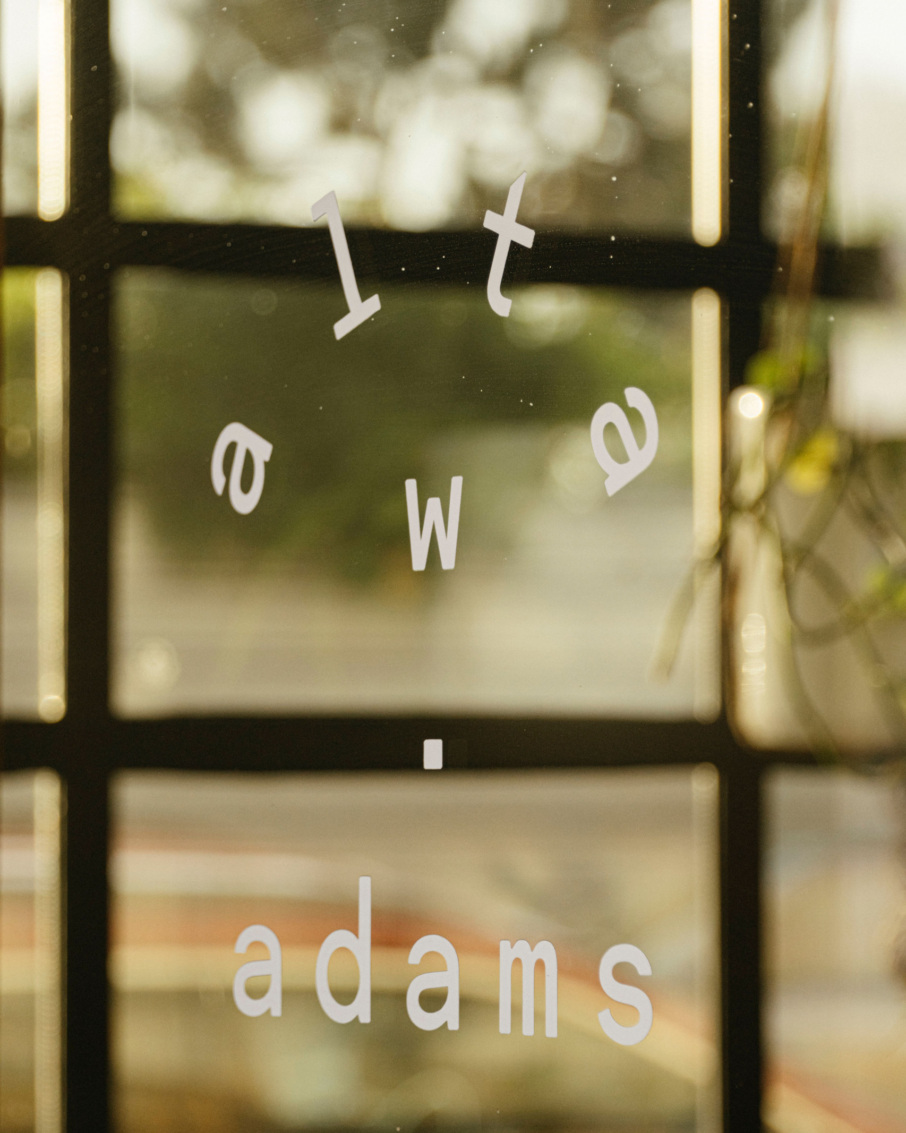
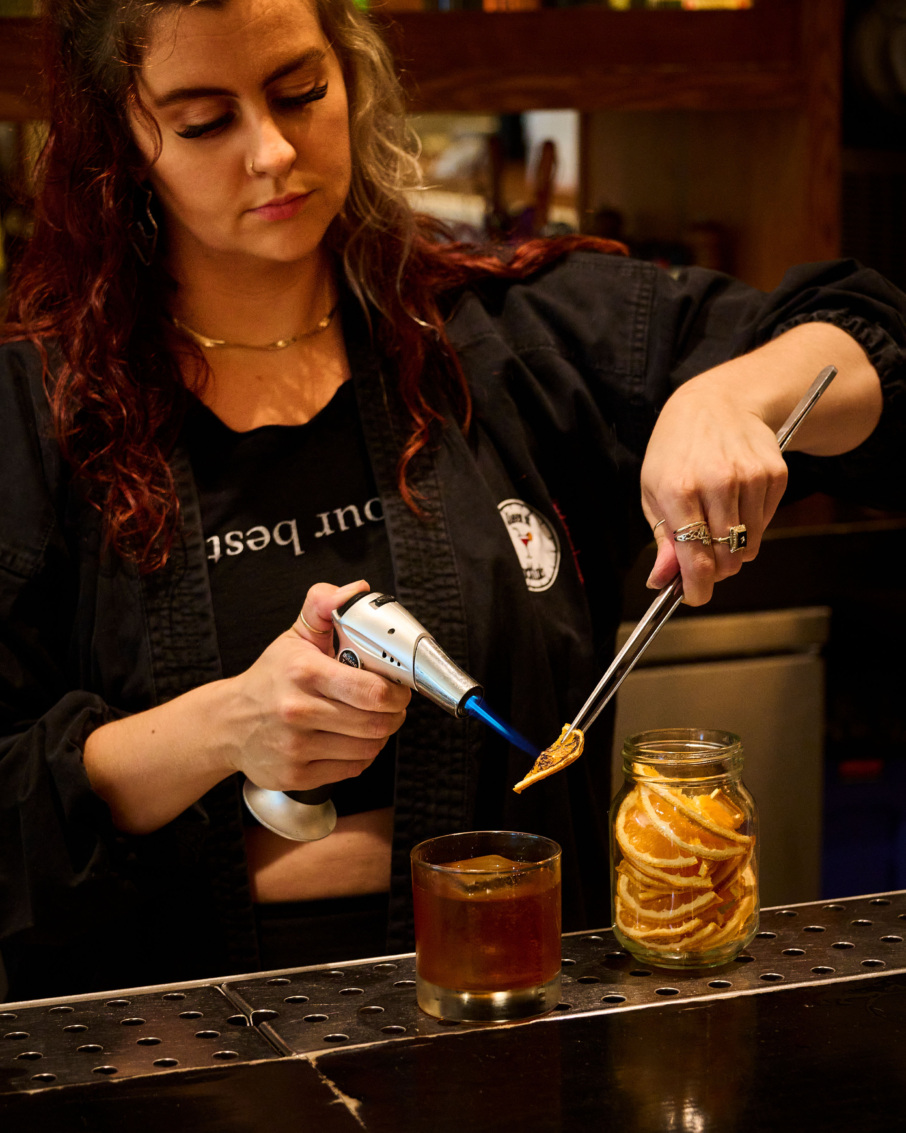
Let’s dive back into the menu. What are some of your best dishes? What ingredients or preparations best represent Alta Adams?
Corbin: For us and the team, I think every dish we create we’re proud of, right? Even if it’s just through the learning process, the experience, the new ingredient we use. We have a pork dish, we have two fish dishes, we have two beef dishes, and then we have our Alta fried chicken, which is like no other. We’re proud of all of them. The ones that get the most recognition is the fried chicken and the oxtail. But strangely, the number one seller is the salmon. But our fried chicken and our oxtails are what we’re known for.
Patterson: One thing I think we’re proud of is the sauces. We were able to start a line of sauces and it’s kind of baby form, but the Fresno hot sauce, which is a kind of vinegar-based hot sauce with red Fresno, is a little unusual on the market.
Our barbecue sauce has no corn syrup or high fructose corn syrup, any kind of unnatural liquid smoke. We take apples and we smoke them for three hours until they’re collapsing, blend them and then put that puree with traditional spices. That’s really delicious.
Smoked oil, we basically just take oil and smoke it. But for vegan food, it’s in our collard greens instead of ham hocks. It’s in our red beans and rice. So a lot of the flavor of smoke is coming through a healthier source.
So bringing all these things into the home kitchen I think is something that we’ve been really excited to do.
Our chicken fry, I think specifically about the chicken, obviously we have our own mix of spices, but I think the technique of it, so we brine it in buttermilk, which is pretty typical. But the crust, it’s thinner, it’s crispier. It’s just a little unusual. But also what happens is in the baking process, the flavor of the spices kind of go all the way through. So it has an umami impact.
Corbin: It gives the meat a different texture. It’s a little lighter. And then our oxtails, I think, are a great representation. When we say California soul food and incorporation of diverse cultures, we braise it in miso and soy with ginger, and then you have your trinity of celery and carrots and onions. And so it’s really the flavors that represent not just the label. California, you have Asian and white and Black, and all those flavors are in there. All those ingredients that these cultures use, they’re in there.
Patterson: But then you taste and it just tastes like really good oxtail. It doesn’t eat like something fusion.
I want to spend a moment on the bar program. Drinks like the Lunchbox, the Mermaid Margarita. It’s fun, but not frivolous by any means. I understand beverage director Aaron Paul places a strong emphasis on local ingredients.
Corbin: The bar program, we treat it just like the kitchen. We definitely are big on seasonality, what’s in season, using what’s local. And we may have some staples on the menu, but we kind of support those with new drinks.
I just came in today and the first thing I said to Madeline, who’s running our bar right now, it’s time for us to sit down and talk about the menu. So yeah, the chefs and the bar manager who’s running the bar, we work together all the time trying to bring flavors together.
This go around, Madeline made a cornbread simple syrup for some drink, and when you drink it, it was like eating a piece of cornbread out the kitchen.
We may cook with things that’s from the bar. The bar makes drinks from things that we prepare in the kitchen. We have this bridge where we go back and forth with each other and it’s fun.
What is your hope for guests when they sit down for a meal at Alta Adams? What are they coming for, what are they leaving with?
Corbin: That they feel at home, that they feel included, that they have a great experience and that we provide, that we surpass what they expected walking in. That’s what I hope.
Produced By

Project Credits
- Writing Stephen Satterfield
- Editing Emily Vizzo
- Photography Rebecca Peloquin
- Creative Director Celine Glasier
- Brand Liaison Marisa Dobson
- Writing Stephen Satterfield
- Editing Emily Vizzo
- Photography Rebecca Peloquin
- Creative Director Celine Glasier
- Brand Liaison Marisa Dobson

